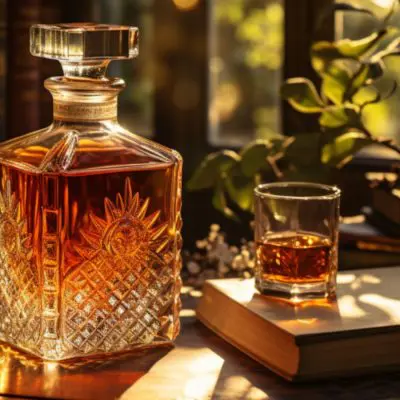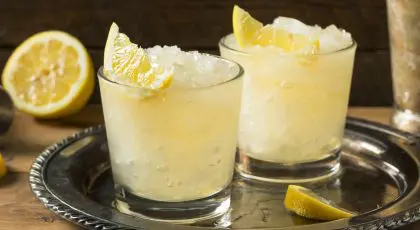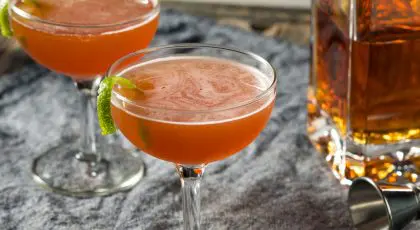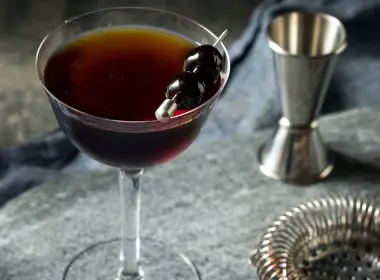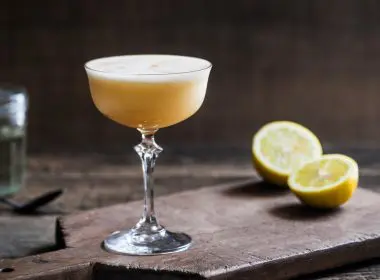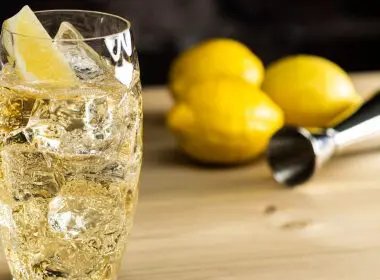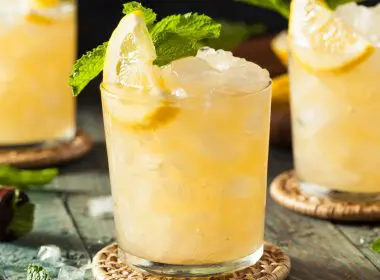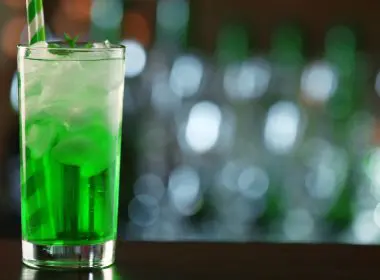Mastering Whiskey Neat: A Comprehensive Guide
Jump to:
This easy guide unpacks the art of drinking whiskey neat, and offers insights into what it means, how to enjoy it, and alternative methods of whiskey consumption. From understanding the concept of ‘neat’ to exploring different whiskey-drinking techniques, this comprehensive resource will teach whiskey enthusiasts how to savour their favourite spirit with confidence.
Understanding ‘whiskey neat’

Frank Sinatra did it, Queen Victoria loved it, and even Gen Z icon Hozier is crooning about it—enjoying neat whiskey is a cultural phenomenon that has stood the test of time. But what exactly is it, though?
Simply put, it is whiskey served without any mixers or ice, allowing the full flavour and aroma of the spirit to shine through. Unlike a drink served ‘on the rocks’, drinking whiskey neat sets the stage for this golden spirit to be the star of the show.
Rye vs Bourbon: The Difference Between Rye Whiskey & Bourbon
Neat vs. up
‘Up’ might sound similar to neat, but there’s a key difference. An ‘up’ whiskey is chilled by stirring it with ice and then straining it into a chilled glass.
Read next: 17 Best Whiskey Mixers (What to Mix Whiskey with)
How to drink whiskey neat

The Scots refer to whiskey as ‘the water of life’, and we completely get that. These distilled malted grain liquors are expertly crafted with plenty of flavour beyond the fire of the first sip, and it’s easy to imagine it breathing new life into winter-chilled kilt-wearers on frosty glens. Here are some pro tips on how to drink whiskey neat:
Choose suitable glassware
Select a glass with a wide bowl and a narrow opening, such as a Glencairn glass or a whiskey tumbler. These glasses are designed to concentrate the whiskey’s aromas and allow you to swirl it easily.
Pour your whiskey
Pour a measure of your chosen whiskey into the glass. Start with a small amount, about 30 – 60ml, to fully appreciate the flavours without overwhelming your palate.
Take a moment to look before you taste
Before diving in, take a moment to appreciate the whiskey’s appearance. Hold the glass up to the light and observe its colour and clarity. Aged whiskeys often have rich, amber hues, while younger ones may appear lighter.
Give it a swirl
Gently swirl the whiskey in the glass to release its aromas. This helps to aerate the whiskey and bring out its full range of scents. Take your time and enjoy the anticipation of what’s to come.
Savour the smell
Hold the glass a few centimetres away from your nose and gradually bring it closer and give it a gentle sniff. This allows you to pick up on the whiskey’s complex aromas without overwhelming your senses. What do you smell? Is it caramel sweetness, smoky notes, or maybe a hint of fruit? Each whiskey has a unique aroma waiting to be discovered.
Go for a sip
Take a small sip of the whiskey and let it coat your palate. Pay attention to the whiskey’s texture, flavours, and any lingering aftertaste. Take your time to savour each sip and explore the nuances of the whiskey. What do you taste? Is it spicy, nutty, or maybe a touch of vanilla? Notice the texture too, is it smooth or slightly peppery?
Reflect and repeat
After taking a sip, take a moment to reflect on the experience. Notice how the flavours evolve on your palate and any lingering sensations. Feel free to take another sip and continue to explore the whiskey’s complexities.
Enjoy your neat whiskey responsibly
Remember to drink responsibly and savour the moment. Drinking whiskey neat is all about enjoying the spirit in its purest form, so take your time and savour the experience. Cheers!
Classy clinkers: 11 Intriguing Variations on the Classic Whiskey Sour
Choosing the right whiskey

When it comes to selecting the best whiskey for drinking neat, there are a few factors to consider if you want to find the perfect match for your palate. Here’s some guidance to help you navigate the selection process:
Consider flavour profile
Consider the flavour profile that appeals to you the most. Whiskey can range from sweet and fruity to bold and smoky, so think about your preferences in terms of taste. If you enjoy sweeter notes, you might lean towards bourbon or Irish whiskey. However, if you prefer more robust and smoky flavours, Scotch whisky might be more to your liking.
Even spirits in the same class can differ in flavour. For instance, Wild Turkey Straight Bourbon has a distinct sweetness, with notes of vanilla, pear and sweet oak. On the other hand, Wild Turkey 101 Bourbon with its high rye content and 101 proof offers a richer flavour and spice bolstered by caramel, cinnamon and notes of orange peel that linger on the palate long after you take that first sip.
Contemplate age
Age can significantly impact the flavour and character of whiskey. Generally, older whiskeys tend to be more complex and nuanced, with deeper flavours and smoother finishes. However, younger whiskeys can also offer vibrant and lively profiles, with brighter fruit notes and hints of spice.
It ultimately comes down to personal preference, so don’t be afraid to experiment with different age statements to find what suits you best. For instance, Glen Grant The Arboralis has a floral, fruity nose with hints of citrus, and a palette that reveals oak notes, butterscotch and touch of spice, while Glen Grant 18 Year Old is a classic sipping malt whisky with glorious layers of barley sugar and butterscotch that linger on the palette.
Explore your options
Don’t be afraid to explore different whiskey styles and regions to broaden your palate. Try sampling whiskeys from various distilleries and countries to discover new flavours and expressions. For instance, Canadian whiskeys like Forty Creek are typically beautifully smooth and approachable. Keep an open mind and be willing to step outside your comfort zone – you might be pleasantly surprised by what you find.
When it comes down to it, selecting the best whiskey for drinking neat is a highly personal decision. Trust your palate, explore your options, and enjoy the journey of discovering new and exciting whiskeys to savour and appreciate.
Learn More About Types of Whiskey: An Easy & Concise Guide
Alternative ways to enjoy whiskey

Of course, you don’t have to drink whiskey neat if the notion of sipping a straight spirit does not appeal to you. There are many other ways to enjoy the proverbial water of life.
Want a chilled drink? Add a large ice cube to your whiskey to enjoy it on the rocks. It’ll cool it down without watering it down as quickly as smaller cubes. Adding a small splash of water can actually open up a whiskey’s flavour profile. Experiment and see if a few drops enhance your enjoyment.
Whiskey also happens to provide a superbly dapper backbone to cocktails for all seasons. From the amber depths of an Old Fashioned that’s ideal for fireside sipping, to the always-cool Mint Julep that goes down a treat in summer, we’ve got a selection of whiskey cocktails that is amazingly versatile and always delicious. Click below for tasty inspo:
AND SO MANY MORE
Got ice? Make These 8 On the Rocks Cocktails Like a Pro
Top tips from Tris

Still keen to dive deeper? Tristram Fini, our friend from the Campari Academy UK, has shared a few valuable tips for folks who want to understand more about drinking whiskey straight:
How environmental factors influence whiskey flavour profiles
Environmental factors play a big role in shaping the flavour profiles of whiskey in different regions. Take Scotland and Kentucky, for example—they each have their own unique influences.
In Scotland, especially in the Highland and Speyside regions, the cooler climate and higher humidity levels create the perfect conditions for ageing whisky. The style of warehouses used here allows for longer maturation periods, letting those rich flavours develop over decades. The lower temperatures and increased humidity help the spirit absorb water, fine-tuning the ageing process. Plus, the water sources, like the River Spey, provide clean, pure water essential for distillation, which is crucial for high-quality spirits.
Kentucky, the heartland of bourbon production, has a different story. The Kentucky River flows through limestone-rich bedrock, naturally filtering the water to remove iron while adding sweetness ideal for fermentation. Kentucky’s varied climate—with hot summers and cold winters—affects the ageing process; unlike Speyside, where barrels proof down due to consistent temperatures, Kentucky’s fluctuating climate causes barrels to proof up, leading to a distinct flavour profile that shows a faster influence of the oak.
How to appreciate whiskey nuances
- Choose your glassware with care. To fully appreciate the nuances of whiskey, consider using a Glencairn glass, specifically designed for Scotch whisky tasting. Another excellent option comes from Denver & Liely, a Melbourne-based producer that creates glassware tailored to enhance the characteristics of various spirits, including single malt, bourbon, Japanese whisky, and agave spirits like tequila and mezcal. A standard double old-fashioned or rocks glass also works well.
- Add a bit of water. To better understand the whiskey’s flavours, try adding a few drops of water. This can help reduce the overpowering effects of ethanol and make it easier to interpret the tasting notes, though it may slightly alter the texture. A good approach is to taste the whiskey neat first; if you feel it needs dilution to reveal more flavours, go ahead and add water.
- Try the Kentucky Chew. One intriguing technique, known as the “Kentucky Chew,” was shared with me by Eddie Russell at Wild Turkey. It involves swishing the whiskey around your mouth on the first sip to prime your palate without breaking apart the flavours. This introduces the ethanol, textures, and base flavours. On the second sip, enjoy the whiskey again, swishing it around while exhaling. This method enhances your experience by enabling you to detect subtle aromas that may have escaped your notice during the initial tasting.
Rare and unique whiskey expressions to explore
Each distillery has its own unique history, and discovering vintage bottles can provide fascinating insights into the past. Vintage expressions, particularly those from the 1950s and 1960s, offer a glimpse into what whiskey used to be like. For instance, bottles from Speyside distilleries, such as Glen Grant’s 5- or 12-year-old expressions bottled in the 1970s, showcase characteristics that differ significantly from modern offerings.
These older whiskeys tend to be more rudimentary, reflecting less advanced distillation techniques and providing a snapshot of whiskey production during that era. Importantly, vintage bottles often come at a more accessible price point compared to rare, high-age expressions, which can be a substantial investment.
For whiskey lovers who wish to enjoy these rare finds rather than simply collecting them as investments, exploring vintage stock is an excellent way to appreciate the history and evolution of whiskey.
To learn more about the best kinds of whiskey to sip straight, visit the Wild Turkey, The Glen Grant, Wilderness Trail, and Forty Creek websites.
